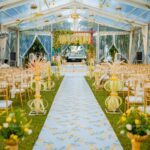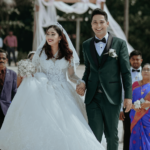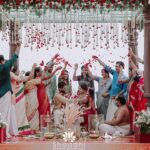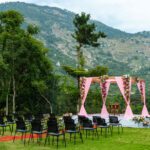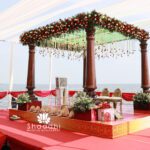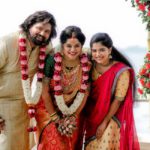The Wedding Rituals mainly depend on the history associated with the community. As a matter of fact, it is one of the largest and the fastest growing Hindu Communities in Kerala is Ezhava. They are the descendants of the Ancient Dravidian Dynasty.
Comparing to the other Hindu wedding ceremonies Ezhava community wedding is the shortest. This community wedding is just a one day wedding without much noise and grand function. The wedding Rituals are very much different from Nair Wedding Rituals. Here is the Customs & Rituals of Ezhava Community.
NISHCHAYAM
To mark the beginning of the wedding, a Nishchayam ceremony is held. In Ezhava weddings, this is considered as one of the most sacred beginnings and hence important to pay attention to. Gifts have to be exchanged between the elders of the bride’s family and the groom’s family. This has to be done as per appropriate tradition and guidance of elders and priests. This ceremony cannot be neglected both from the standpoint of the gifts to be bought as well as the presence of the bride and groom along with elders.
GANESH PUJA
The wedding ceremony begins with the Groom offers prayers to Lord Ganesha for a Happy & Prosperous marriage. This worshipping of Lord Ganesha is also to get rid of any obstacles or hindrances in the wedding.
GAURI POOJA
The Bride worships the Goddess of Power in her house. This is conducted to get rid of all evil and empower the bride with strength to handle her new responsibilities in her married life.
After this, the family astrologer picks an auspicious date & time for marriage by checking the horoscopes of both Bride & Groom and share it the family members of Bride & Groom. The Auspicious date & time fixed by Family Astrologer is called Muhurtham.
Generally the weddings are conducted early morning. The Muhurtham of the Wedding plays a very important role. Hence, the family members of the Bride & Groom consult the horoscope & Muhurtham with their known & Trustworthy Astrologers.
MUHURTHAM
In olden days the Wedding customs & Rituals are conducted in Ancestral house. The time changes according to the Generation, now all prefer to keep their weddings in the Well-known Temples, Auditorium or Convention Centres. The Bride & Groom then arrives in the selected venue along with their Family members. The wedding Rituals are then conducted in the presence of family, friends, relatives and the other invited guests.
DECORATION
The wedding decors can be as per the choice of the Bride & groom but there are certain important puja articles which has to be present in the Mandap or the stage where the bride & groom perform their wedding Rituals which includes the Jagat Sree Narayana Gurudev’s Idol or Image, along with 3-5 Nilavilakku ( the Traditional Kerala Lamp, Coconut, Flowers 7 or 11 Thalam ( Thalam is a large metal plate which includes arecanut flower, rose petals, marrygold flower, Small para + Kasavu visari cloth (Handloom Cloth with Gold Thread Borders in the form of a chinese fan), small vilakku (small lamp). This thalam is used for by the bridesmaid in procession by escorting the Bride to the stage or Mandap), Ashtamangalyam Thatt (Ashta ( Eight) Mangalyam( Marriage or other occasion) consist of Eight articles that is kept on a large metal plate or bronze vessel for offering . These eight articles are Rice, paddy, tailed mirror, sandal, reddish kumkum, kajal, grandh (holy book) and washed clean cloth. In Hindu marriages, just before the marriage, a group of young girls encircle the groom with a bronze vessel containing eight auspicious items. This symbolizes that we are giving our loving sister to you with all her essentials as dowry. Ashtamangalyam means eight auspicious items for marriage. It is also sometimes a gift given to the new couple, and associated with mangalyam as in a wedding as far as Kerala is concerned. Girls from the bride’s family go around with brass plates containing Ashtamangalyam. This is done to honour the bridegroom and his family. So Ashtamangalyam symbolizes a lot. It is important to note that no gold or money is using in Ashtamangalyam which indicates that, these have no value in marriage life.).
KANYADAN
The wedding Rituals begins with Kanyadan, in this Ritual the Bride is brought in a basket to the Mandap. The father of the groom gives him a Mangalsutra to tie around the bride’s neck. This is known as a Thalikettu. After the thalikettu, (father gives the hand of his daughter in groom’s hand), the couple circles the holy mandap at the enchantment of Holy Scriptures.
KANYADAAN AKSHATA
As the couple exchange the flower garland known as Varmala, the guests & relatives along with family members shower the petals of flowers on the married couple which symbolizes blessing for the newly wed.
CIRCUMAMBULATION
After Kanyadaan Akshata , The bride and groom circumambulate a consecrated mandap three times. This custom is to mark their togetherness in sickness, health and towards hearth and home.
NAMASKARAM
After Circumambulation, the Bride & Groom together turn towards the guest seated at the Mandap and join the hands in Namaste form and Bow down for Thanking their presence.
SALKAARAM
The elaborate wedding is then followed by a reception party also known as Salkaaram
SPECIAL CULTURA NUANCES
Thali kettu kalyanam (mock marriage ceremony) A thali kettu kalyanam or a mock marriage ceremony was prevalent among some rich Ezhavas (or Pramanis ). A thaali (a gold necklace tied around the bride’s neck) tying rite took place before the onset of puberty. During this ceremony, the girl was forced to marry a man (strictly from the same community unlike other castes which followed this custom) whose horoscopes matched.
Because that man was simply her “mock” husband, he could leave her after the completion of the Ritual. Sree Narayana Guru opposed this strongly and took the initiative to simplify marriage customs and celebrations.
